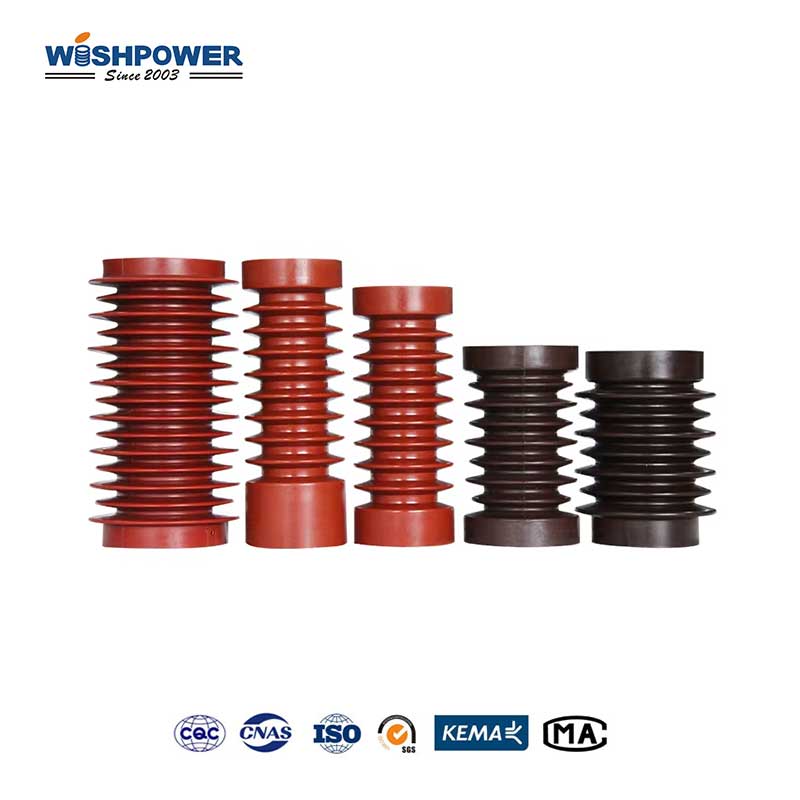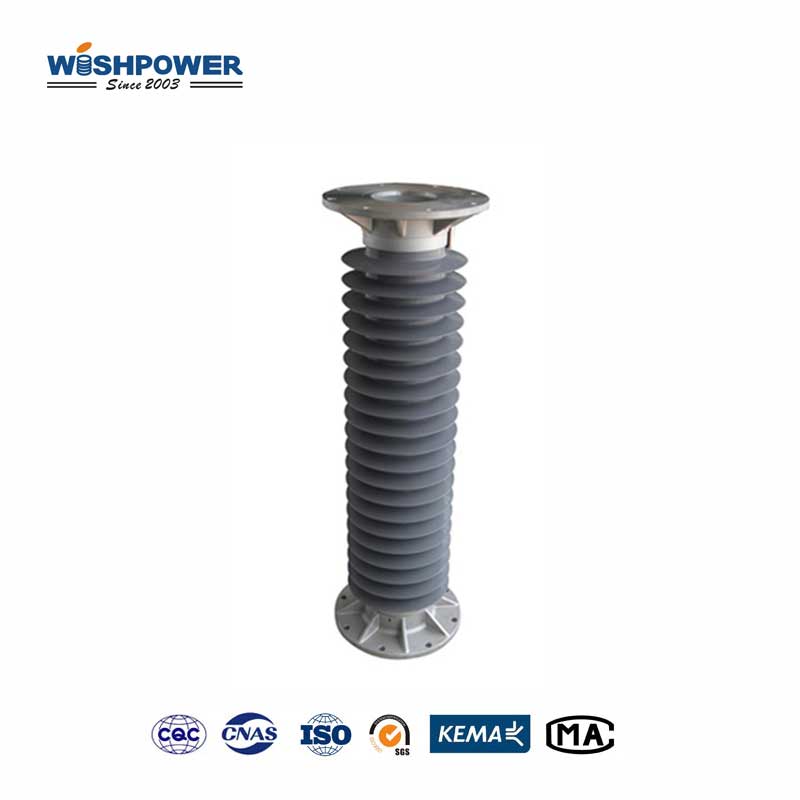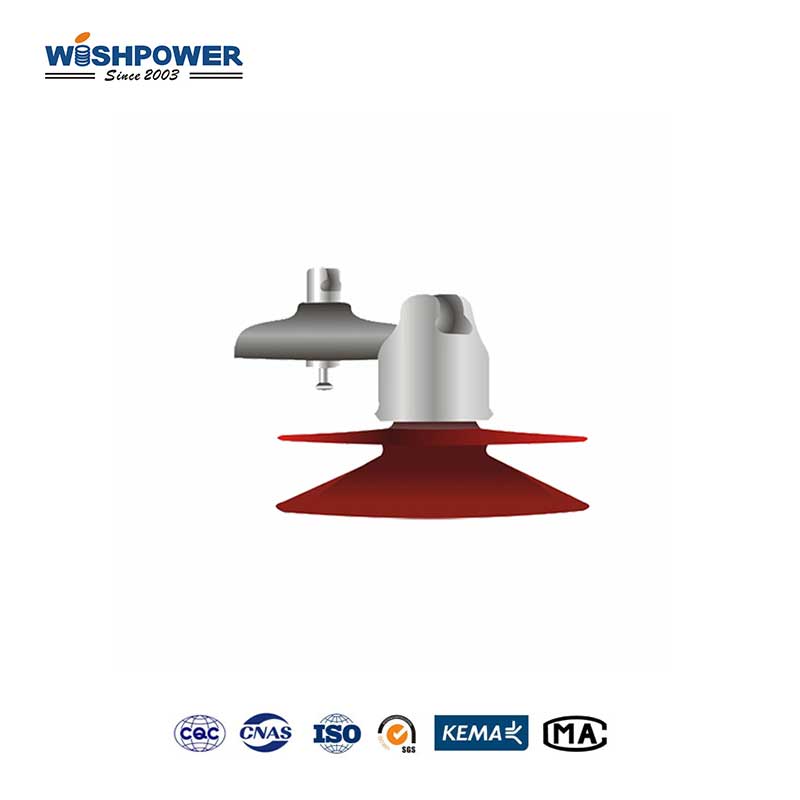Specification
| Type of Insulator |
FQB-1.5/96 |
| Specified Voltage |
1.5 kV |
| Specified Mechanical Tensile Failing Load |
96 kN |
| Specified Mechanical Bending Load |
/ |
| Section Length |
285 mm |
| Min Insulation Distance |
102 mm |
| Min. Nominal Creepage Distance |
180 mm |
| Lightning Impulse Withstand Voltage(Peak Value) |
110 kV |
| Power Frequency Withstand Voltage Test- Wet |
30 kV |
The table above is just one of our product parameters. If you want more information, please get in touch with info@wishpower.net or download the file below.
What is Anchor Insulator?
The anchor insulator is aimed at offering mechanical support coupled with electrical insulation needed for the guy wires applied to overhead power lines. These insulators are designed to affirm the guy wires on poles or towers, especially in high-tension power systems for example at the terminal ends or bending points along distribution lines. The composite anchor insulators are not made of porcelain or glass like the traditional insulators but come with high-performance silicone rubber and fiber-reinforced cores thus making them stronger mechanically, light in weight, and more resilient to ultraviolet radiation, pollution, and moisture. This is because they are made very strong, durable, and resistant to wear, thus requiring less repair, and are very reliable even when they are used for long periods, in turn, they enhance the stability and safety of the power line structures from electrical faults and also enhance the integrity of the tensioning system. Another advantage is the easier changes in the shape and design of the composite materials that can conform to specific load demands or installation conditions.
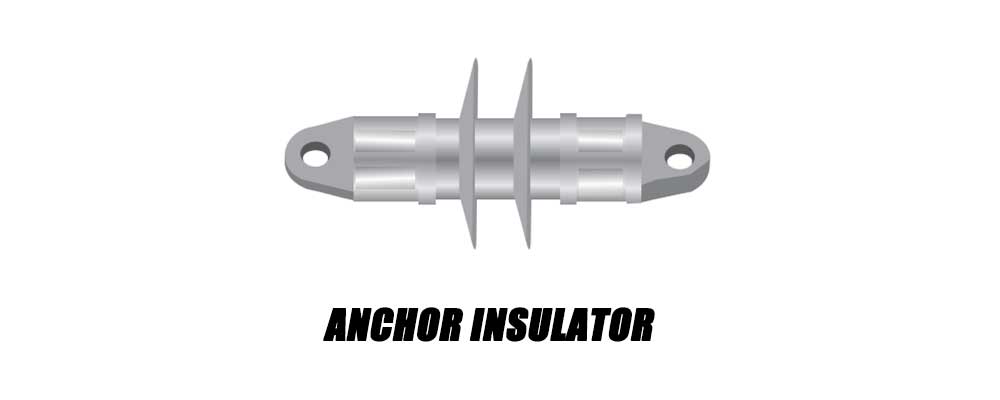
Features
- High tensile strength:
Composite anchor insulators are specifically constructed to have enhanced ability to suit tensile loads and thus are suitable for applications with guy wires and tensioning systems. This makes them distinct from other composite insulators for example suspension or line post insulators that may have control over bending or compressive strength.
- Designed specifically for anchoring:
It is specially designed to secure and fix structures and simultaneously give electrical insulation in guy wires that are used in supporting utility poles or towers.
- Enhanced stability under vibration:
It can at times be used with added damping characteristics that help to minimize vibration and dynamic loads; essential when guy wires are subjected to wind, seismic conditions, or other variable loads.
- Compact and streamlined profile:
It is generally more compact, with the latter often having an elongated shape to handle the electrical loads. This compact design facilitates tight installations where space is limited.
- Special end fittings:
Its end fittings are designed to connect firmly with the guy wire and tensioning hardware, providing a safe and reliable interface, especially suitable for anchoring applications. It can have different accessory requirements according to its specific role in the power system.
Benefits
- Improved safety:
This strain insulator offers superior electrical insulation thus decreasing the possibilities of influences and ensuring safety in the electric vicinity of high voltage. Non-conductive nature helps to avoid the interaction of strain wires from neighboring systems where a flow of stray current is dangerous.
- Corrosion resistance:
The insulators in use are made of composite materials, and these are good at withstanding chemical compounds such as those found in areas with high salt concentrations. This reduces the potential of insulator degradation and guarantees long-lasting performance to the structure.
- Low maintenance requirements:
They are durable and immune to most weather conditions hence calling for minimal maintenance. This lowers overall operating costs and also enables longer time intervals between the submission of inspection or replacement thus enhancing the efficiency of total system integration.
- Easy installation:
Owing to its lightweight design it can be easily maneuvered and installed without involving many people and expensive equipment. Its easy installation property helps to cut down the first-time setup time and make it quicker while the replacement is safer now.
- Reduced electromagnetic interference:
The materials that it uses in its construction do not interfere with electromagnetic fields which assists in keeping communications and control signals clear around electrical power sources. This is particularly relevant in the contemporary power systems that incorporate efficient methods of monitoring and data transfer.

Safety
These kinds of transmission line post insulators help in giving this necessary safety as it aid in giving good electrical insulation as well as mechanical support to guy wires to avoid electrical mishaps and any form of contact. Constructed using nonconductive materials including silicone rubber and fiber-reinforced cores withstanding factors such as corrosion, ultraviolet radiation, and pollution. NonBrittle designs make them long-lasting thus having negligible maintenance, and the probabilities of failing are remote making them safe to use on various power line functions.
Certificate
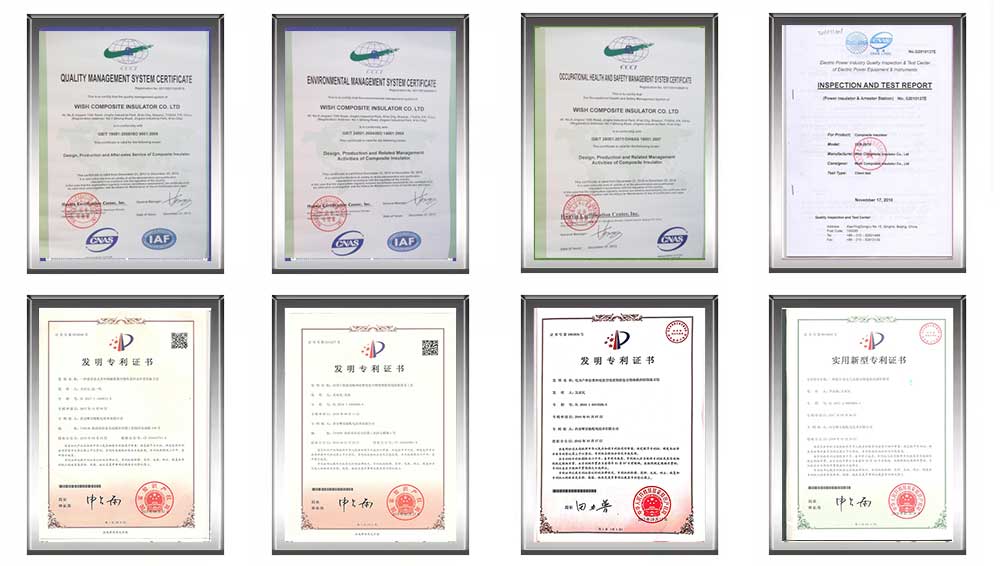
Factory
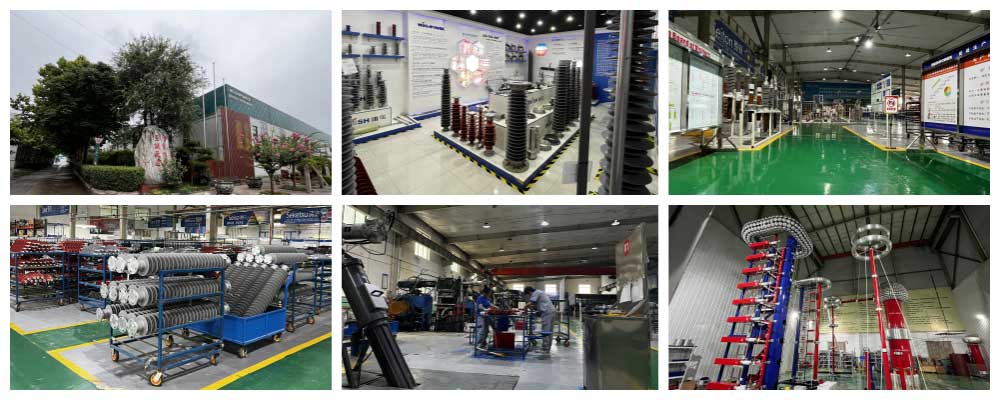
Hot Tags: Anchor Insulator, Composite Insulator, China, manufacturers, ISO factory, wholesale, KEMA, high quantity, best, price, low to high voltage












